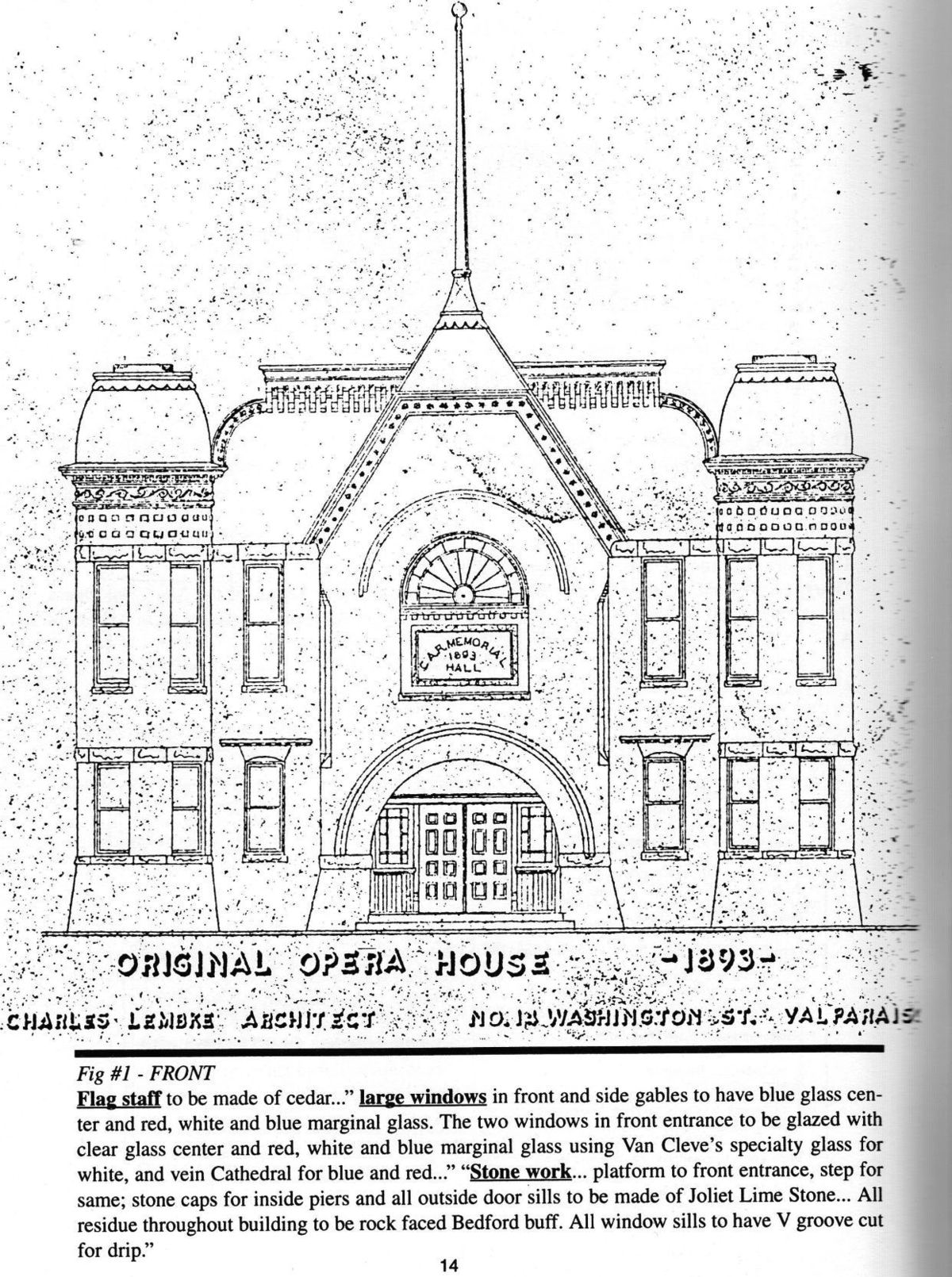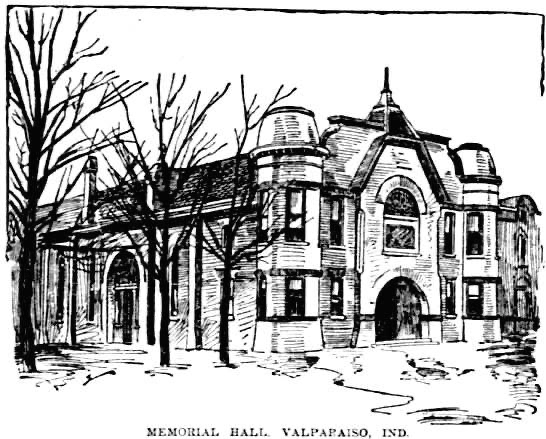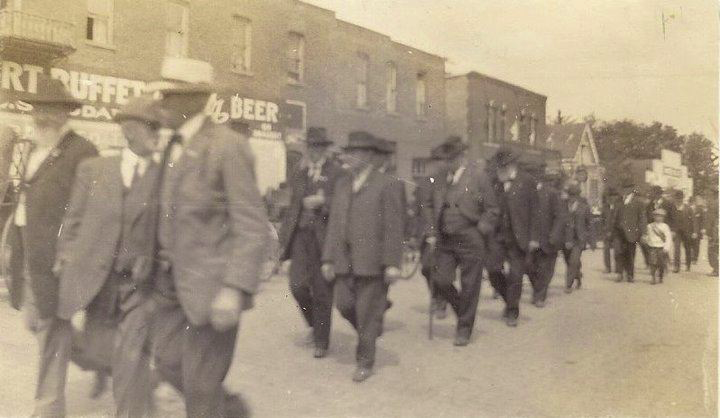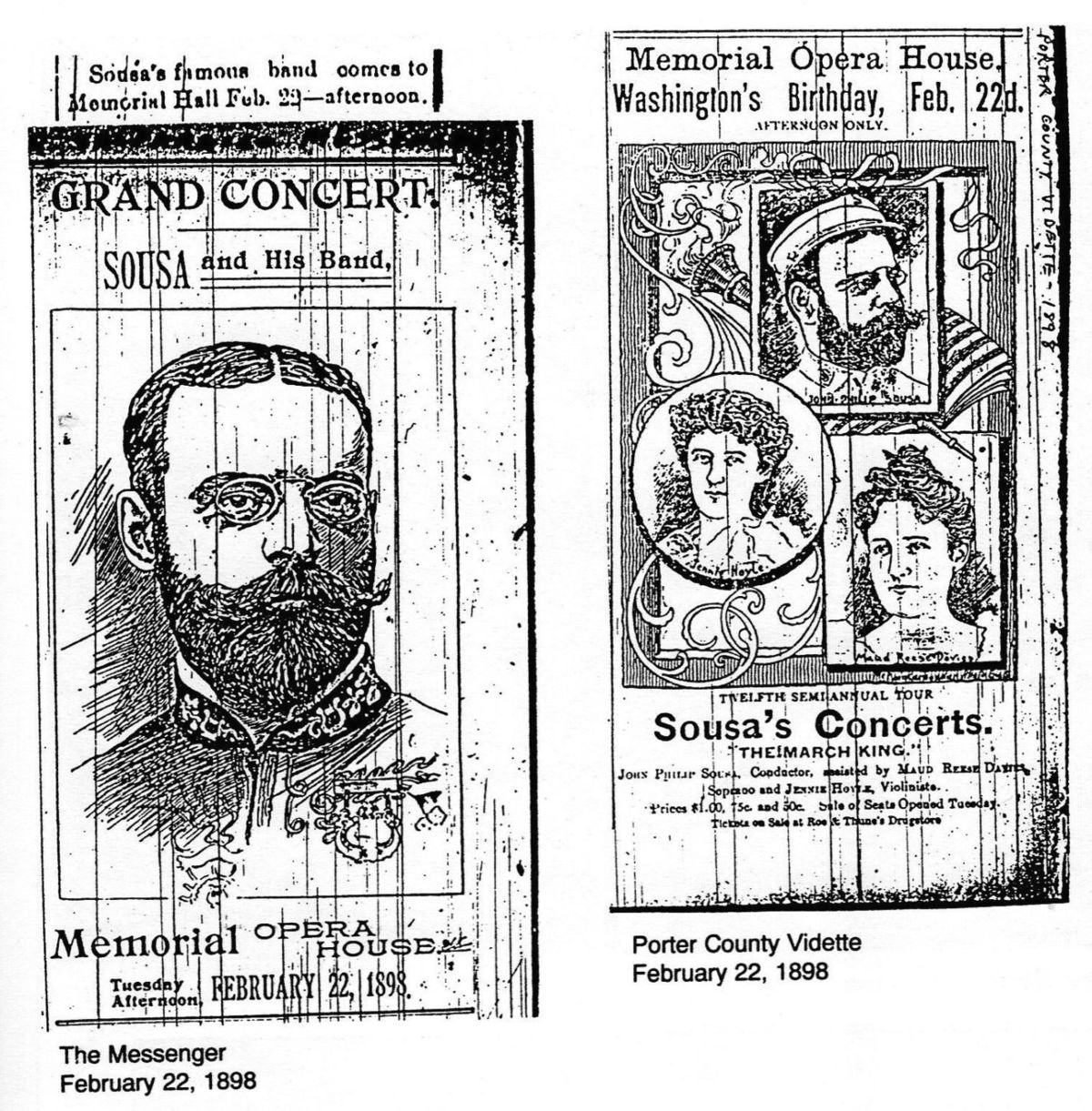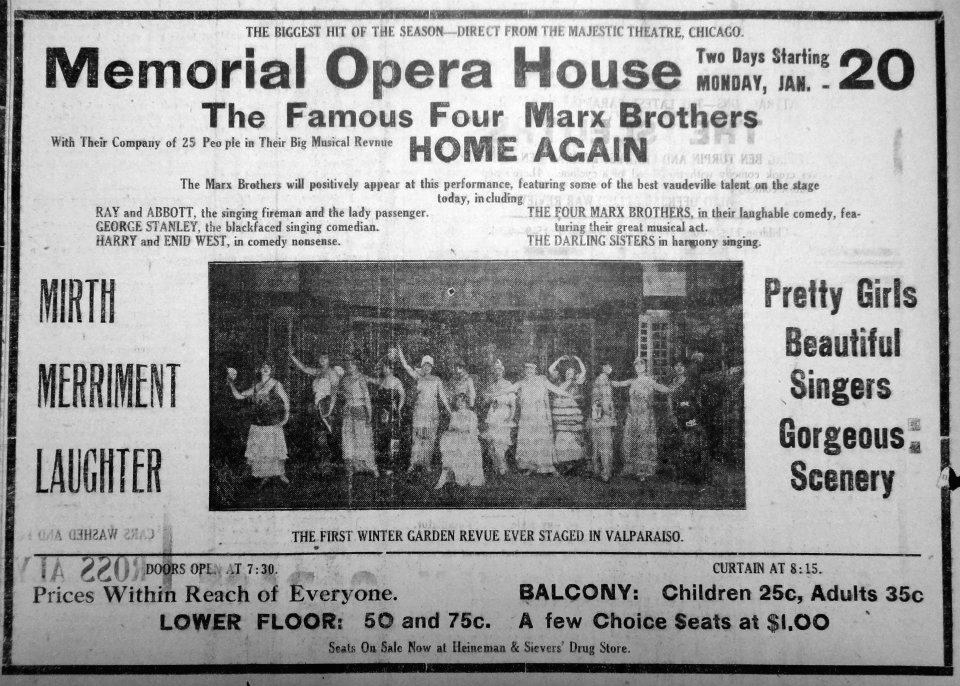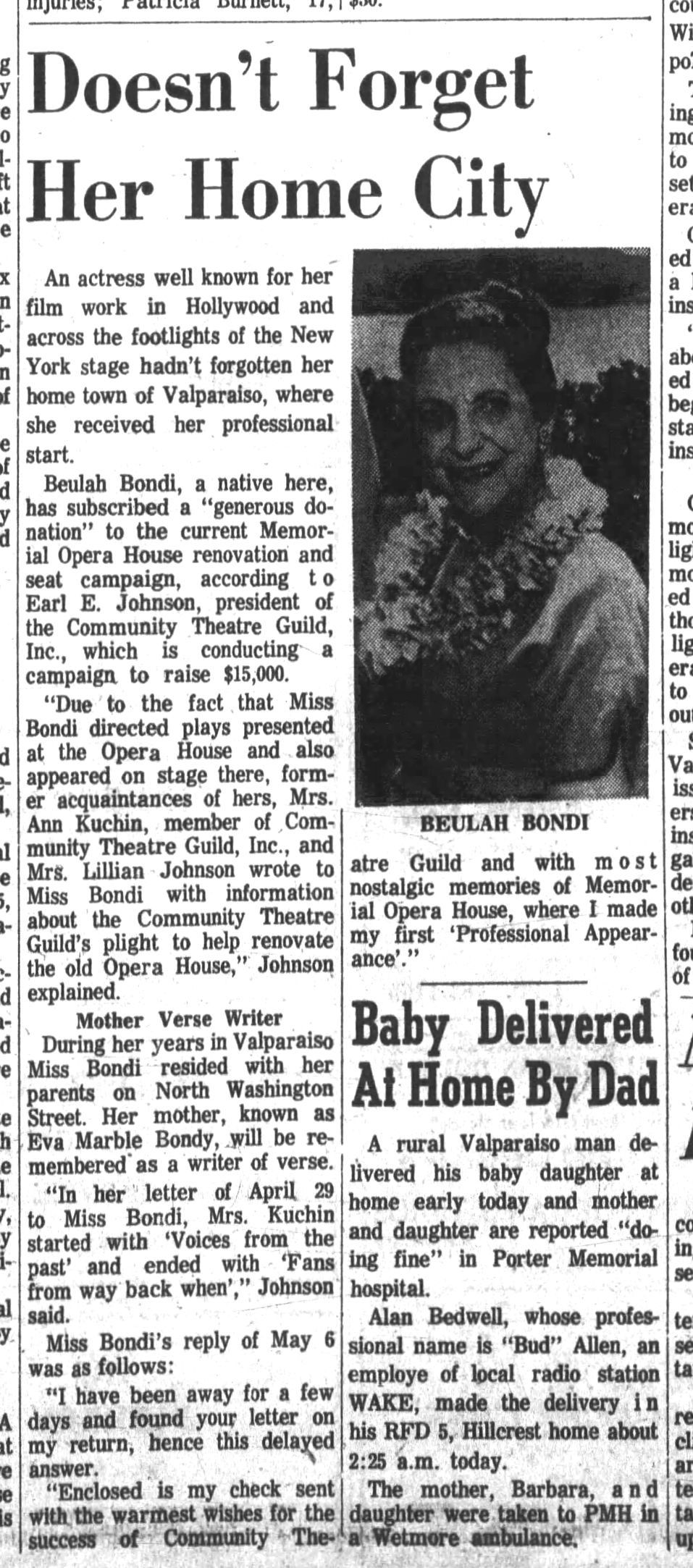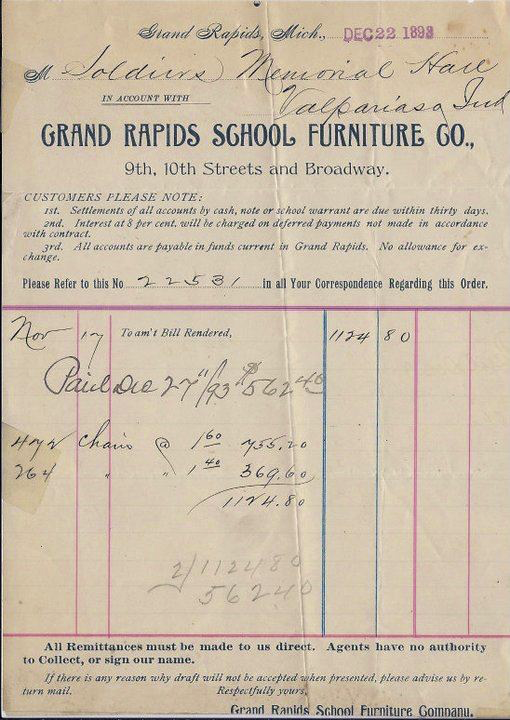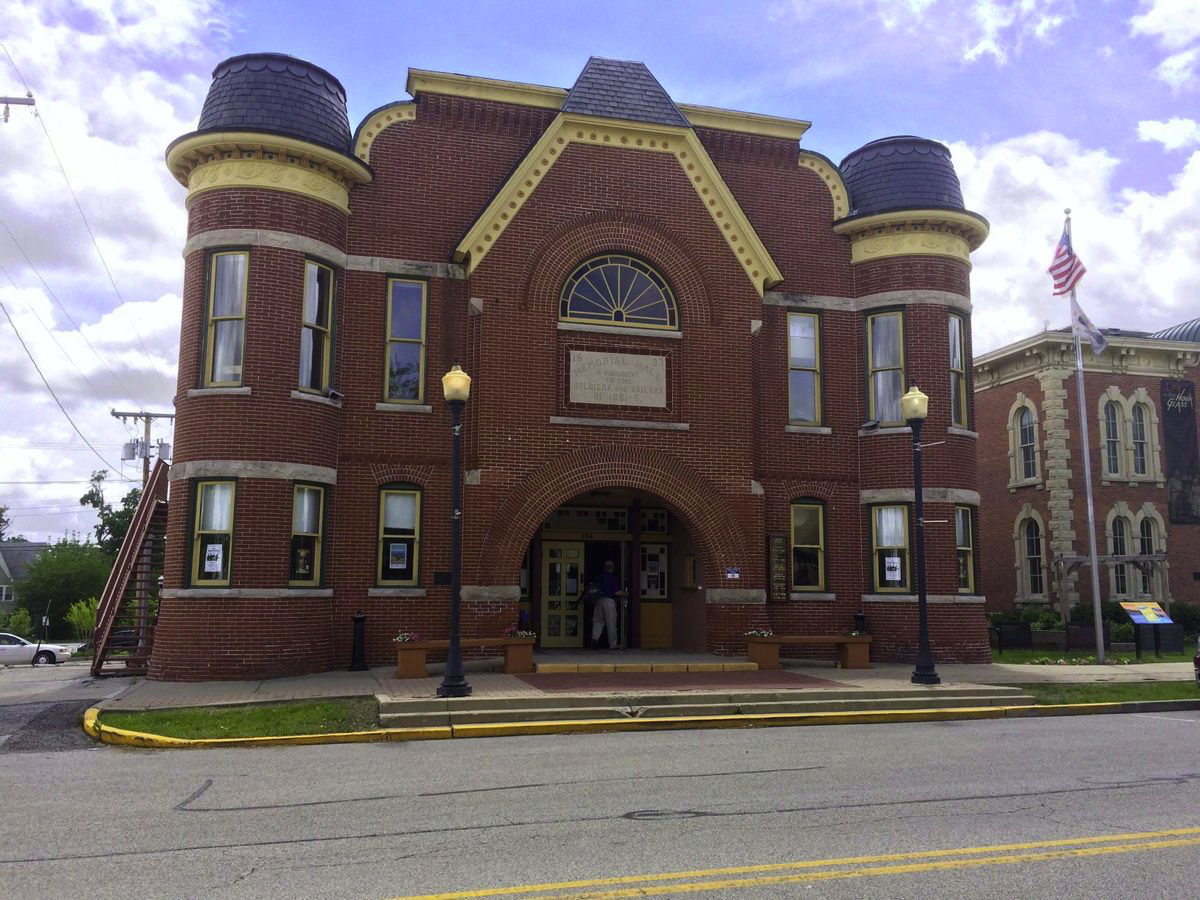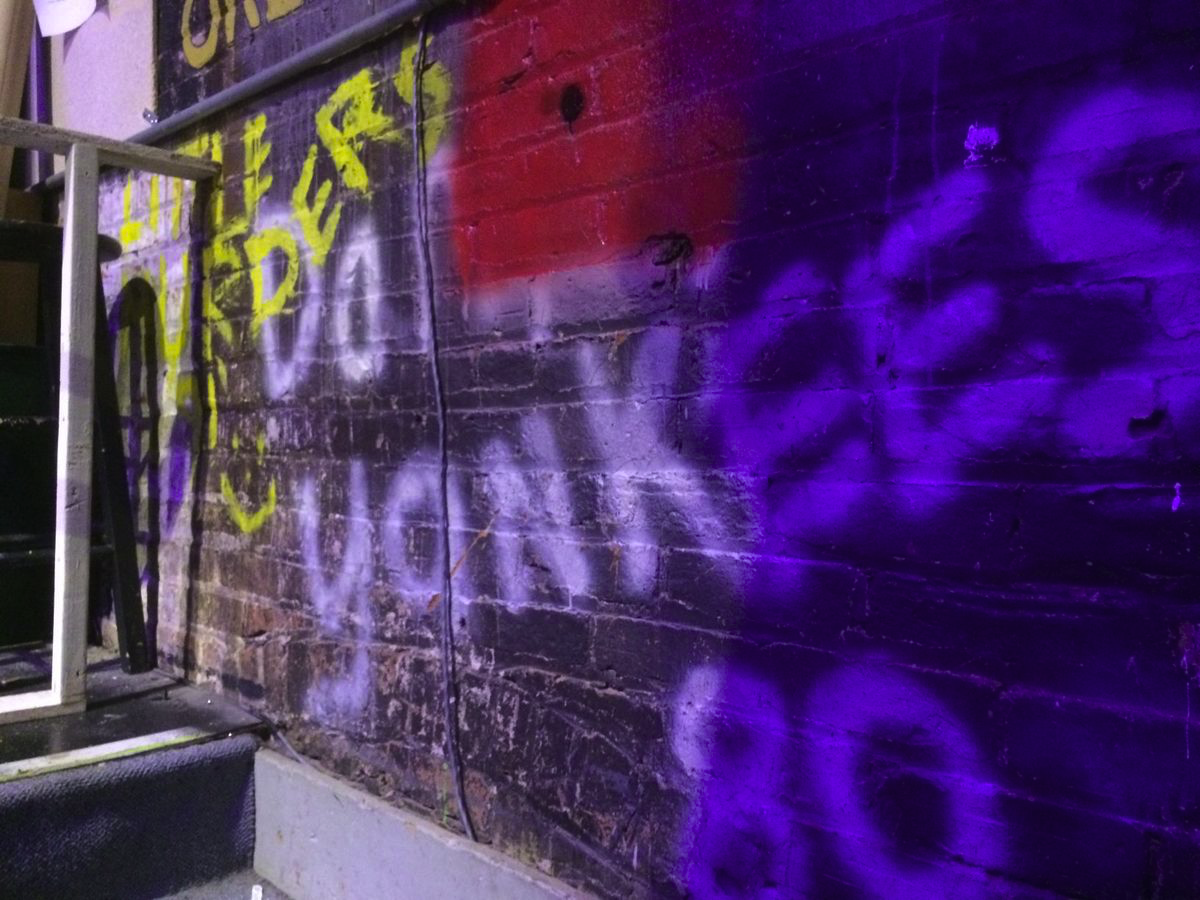History
History Of The Memorial Opera House
Getting Ready To Build
"Just like when the original courthouse was built, in 1837, the new opera house was paid for through subscriptions. Residents were encouraged to pay for a brick in the new building.
That wasn’t the only way the money was raised. Lectures were given with the ticket fees going to to the new building.
“Dinners, bake sales, anything you’d never amount to much, they did to raise the money,” Pazour said.
Without the Woman’s Relief Corps working to raise money, that building wouldn’t have built, he said.
The Porter County Museum is remodeling the old City Hall, fire station and police station at 16 Indiana St. for a museum annex.
“I think we’d have to hold 100,000 bake sales to come anywhere near what we need,” he said."
Memorial Hall, as it was first known, as designed by Charles Lembke, but built not by Lembke's brother, Christian Lembke, but by John D. Wilson & Sons, who constructed other government buildings in Valparaiso in that era. Wilson's contract was for $9,950, according to the May 11, 1893, issue of The Messenger. That would be $275,505 in 2017 dollars according to Westegg's infation calculator online. By November, the building was finished.
The Early Days
Memorial Opera House, originally dedicated to Porter County soldiers and sailors who died during the Civil War, eventually honored all veterans of that war, not just the war dead. It was a popular spot for political rallies, concerts, lectures, plays and social events as well as a meeting place for the GAR. Later, when motion pictures came out, it became the first theater in Valparaiso to show them.
This is a photograph of the Chaplain Brown Post of the Grand Army of the Republic marching from the old building to the newly constructed Memorial Hall. This image was taken November 11, 1893. This is the only known photograph of the vent in existence.
The original uses continue, although motion pictures rarely are shown because licensing fees are so high and attendance too low to make it profitable. John Philip Sousa, the renowned march king, performed repeatedly at the Memorial Opera House in downtown Valparaiso.
Many famous people appeared on the Memorial Opera House stage, including President Theodore Roosevelt, music composer and march king John Philip Sousa, the Marx Brothers, Valparaiso University graduate Lowell Thomas and an assortment of other performers -- including Bronte, "the mathematical or mind reading dog," along with "Prof. Wm. M'Cormick, Whistling Imitator, Magician, Ventriloquist," whose Jan. 27, 1905, appearance was advertised in the Porter County Vidette.
Among the stars, though, was one who deserves special recognition. Beulah Bondy (1888-1981), a local girl, was given a rave review for the title role in "Little Lord Fauntleroy" when she was just 8 years old.
Bondy, who received her bachelor's and master's degrees from Valparaiso University, changed the spelling of her last name to Bondi when she went to seek fame and furtune -- both of which she achieved -- as an actress.
Bondi was one of the first five acresses nominated for the newly created Oscars category of "Best Supporting Acress" for her role in "The Gorgeous Hussy." She also played Jimmy Stewart's mother in "It's a Wonderful Life," among other movies."
Bondi returned to Valparaiso periodically to visit family and old haunts, including the Memorial Opera House and Valparaiso University. She is credited with givbing a "generous donation" in 1967 to the Memorial Opera House to help purchase new seating.
The Building Today
The Indiana Department of Natural Resources grant helped to pay for an architect to do a thorough study of the building to determine what needs to be done to continue to preserve it and help determine priorities for those needs. The window treatments were recently replaced, as was the main curtain for the state.
The building has some surprises most visitors won't see, including the VIP room upstairs where the Sons of Union Veterans -- descendants of the GAR members who saw to it that the Memorial Opera House was built -- continue to meet.
Backstage, the tradition of painting the names and dates of theatrical productions dates back to the 1960s.
Ghosts In The House
The Porter County Museum Executive Director said he was working alone inside the 157-year-old building one Sunday evening early last month when he heard a little girl laugh.
"I just stood there," he said. "I heard it clear as day".
He stepped outside thinking children may be playing nearby, but found no one around in the city's downtown area. He decided it was time to leave.
"That is enough for me today," he said.
A week later, the executive director at neighboring Porter County Memorial Opera House was in his office when someone mentioned seeing a young girl with long curly hair and formal clothing peering out of an upper floor window at the county museum.
After seeing the drapes moving in an upper-level window at the museum later that same day, he said he sent a text message to the museum director, who was baffled since the building was closed. He said there is also no forced-air heating or cooling system in the building and the motion-detector security system was never triggered. "I didn't tell anyone about this giggle," he said. Neither director was sure what to make of the occurrences, but said they are not isolated events.
The Memorial Opera House Technical Director captured some strange images that were being picked up by a security camera inside the 124-year-old building. "It was like a snow storm happening in the Opera House," he said. Many light-colored orbs were moving together in a circular pattern inside the building. The occurrence, which lasted for about a minute, triggered a motion sensor, which sent a message to the technical director.
"There are no ventilation vents or anything around that could logically explain it," he said.
While it is not uncommon to see a few of these floaters on camera, he knew of no other time when there were as many gathered. Many older buildings attract a reputation of having paranormal activity, typically based on stories that are fabricated over the years.
The stories typically take two approaches. The first is that the paranormal activity is attached to the building itself based on its history. The other is that it is connected to the building's contents.
The museum has plenty of artifacts to initiate such stories, including the stuffed collie-mix dog fondly known as Daisy. The dog's body was preserved by a Portage Township woman after it was struck by a car and killed in 1930. Daisy made her way to the county museum collection in the early 1970s after her companion died. Several people since have claimed to see the long-dead animal move.
The Opera House director said he had experienced other unexplained happenings at the Memorial Opera House. While working in his office, he has hear footsteps in an above loft area that only can be reached by a 15-foot ladder. "There's no way anyone could access it without me knowing," he said. There also have been occurrences of lights turning on by themselves, he said. On one such occasion a few years ago, he said he was doing a final walk through the building before leaving for the night and noticed once in the parking lot that the lights he had just turned off in the basement were back on.
"The lights can just say on," he said, laughing.
He said these unexplained occurrences never have left him feeling uncomfortable. "It's not like a super creepy feeling," he said. "But I'm not going to mess around too much with it."
